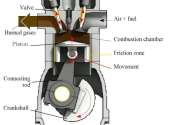How cars 'waste' two thirds of their fuel
With the rise in gas prices showing no signs of abating, it seems like an appropriate time to ask ourselves: are our cars not efficient enough? Europe has decided to ban the production of new combustion engine-powered vehicles ...
Mar 13, 2023
1
25




